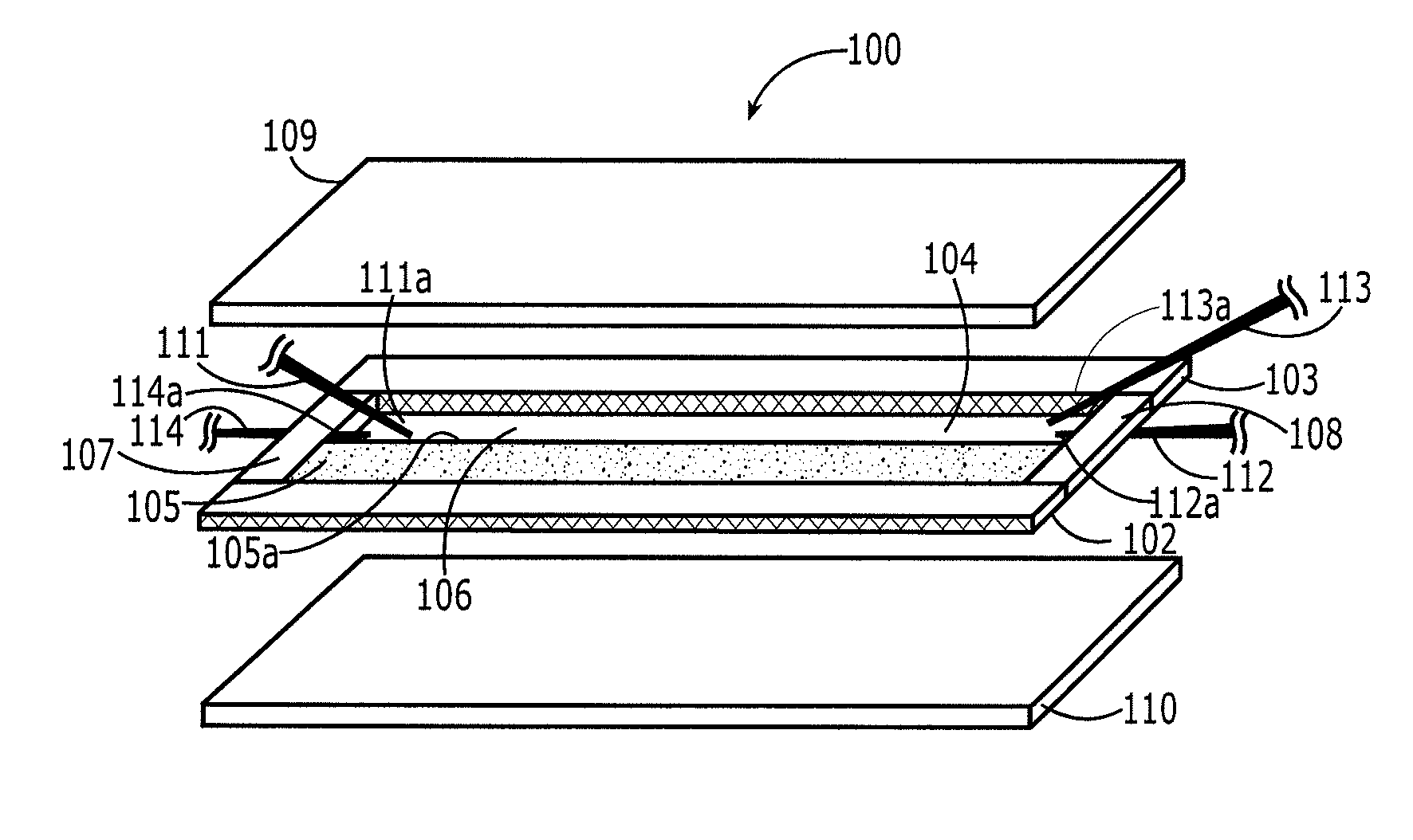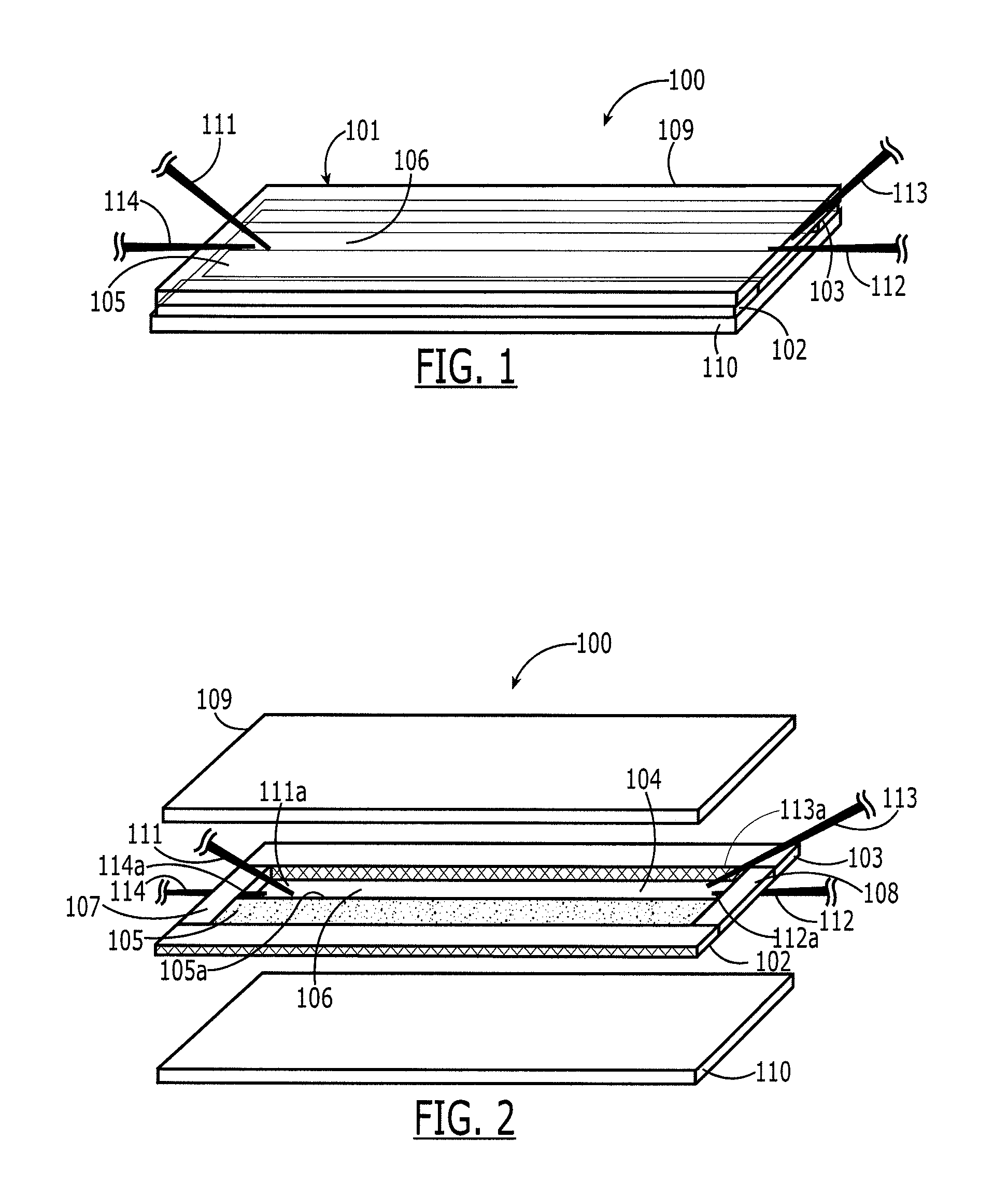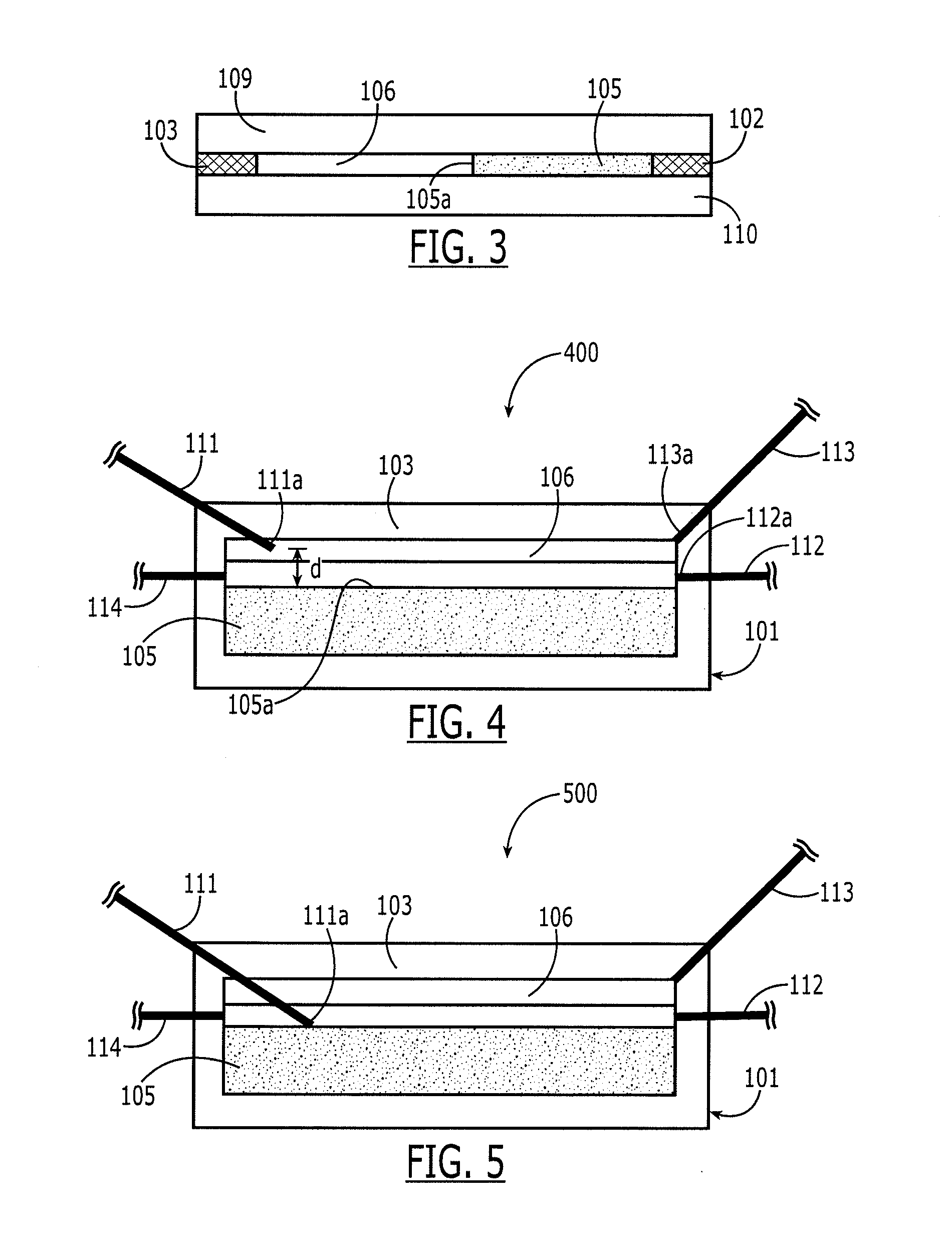Apparatus and method for separating hydrophilic and hydrophobic components
a technology of hydrophilic and hydrophobic components, applied in the field of methods and apparatus for separating and/or analyzing fluids, can solve the problems of decreasing achieve the effect of reducing the likelihood of solids related damage, easy control of heat transfer, and large scal
- Summary
- Abstract
- Description
- Claims
- Application Information
AI Technical Summary
Benefits of technology
Problems solved by technology
Method used
Image
Examples
Embodiment Construction
[0026]Referring to FIGS. 1-3, one embodiment of the apparatus 100 for separating hydrophilic material from hydrophobic material according to the present invention is shown. The apparatus 100 comprises at least one body 101 having at least first and second parallel walls 102, 103 defining an elongated cavity 104. Along the first wall 102 is a water-absorbing material 105 having a surface 105a essentially parallel to the second wall 103, thereby defining a channel 106 between the surface 105a and the second wall 103. The channel 106 has an upstream (left as shown) and downstream (right as shown) orientation. Disposed upstream in the channel 106 is a first inlet 111 having a first inlet end 111a disposed in the channel 106 at a certain distance d (see, e.g., FIG. 4) from the surface 105a. The first inlet 111 is configured to inject a mixture of hydrophilic and hydrophobic material into the channel. Downstream of the first inlet 111 is a first outlet 112 having a first outlet end 112a d...
PUM
| Property | Measurement | Unit |
|---|---|---|
| distance | aaaaa | aaaaa |
| distance | aaaaa | aaaaa |
| angle | aaaaa | aaaaa |
Abstract
Description
Claims
Application Information
 Login to View More
Login to View More - R&D
- Intellectual Property
- Life Sciences
- Materials
- Tech Scout
- Unparalleled Data Quality
- Higher Quality Content
- 60% Fewer Hallucinations
Browse by: Latest US Patents, China's latest patents, Technical Efficacy Thesaurus, Application Domain, Technology Topic, Popular Technical Reports.
© 2025 PatSnap. All rights reserved.Legal|Privacy policy|Modern Slavery Act Transparency Statement|Sitemap|About US| Contact US: help@patsnap.com



